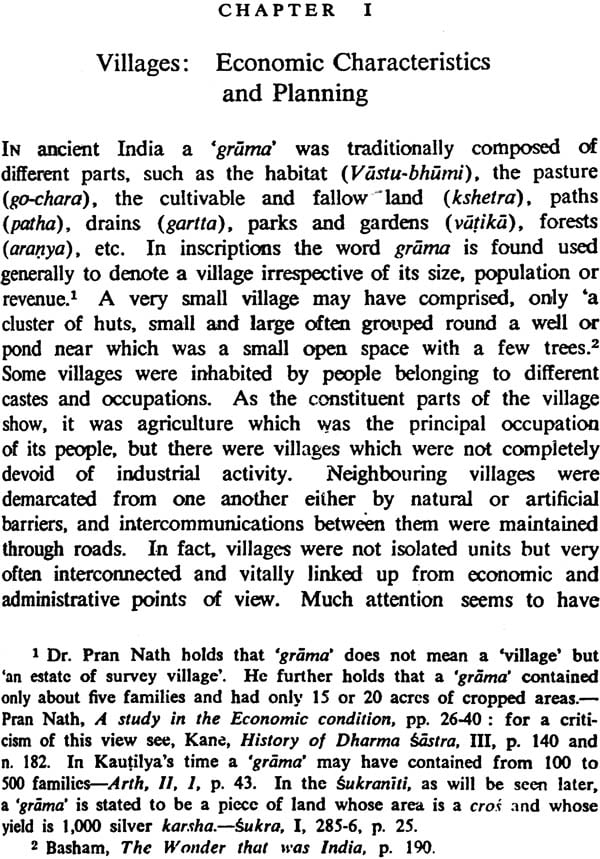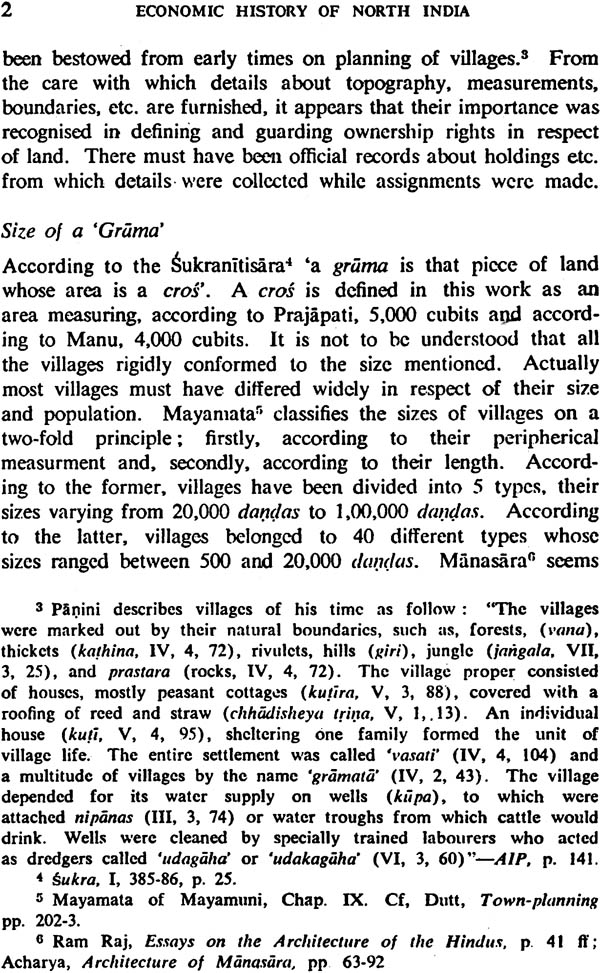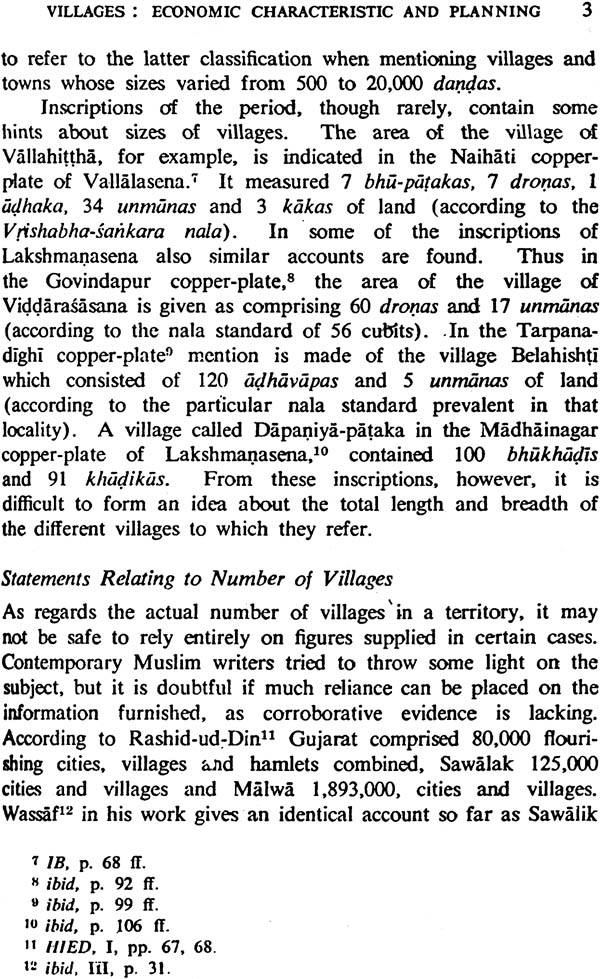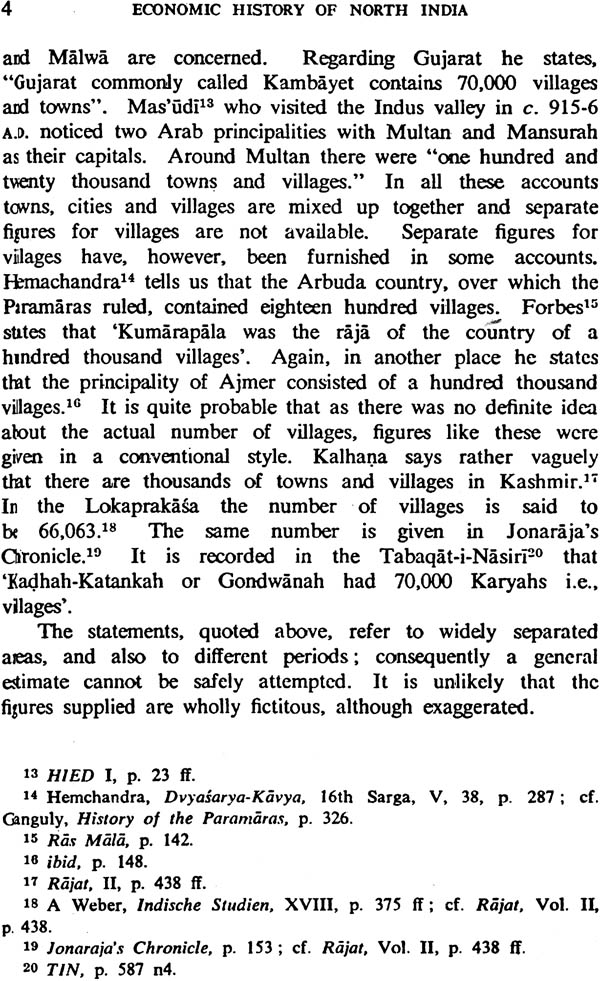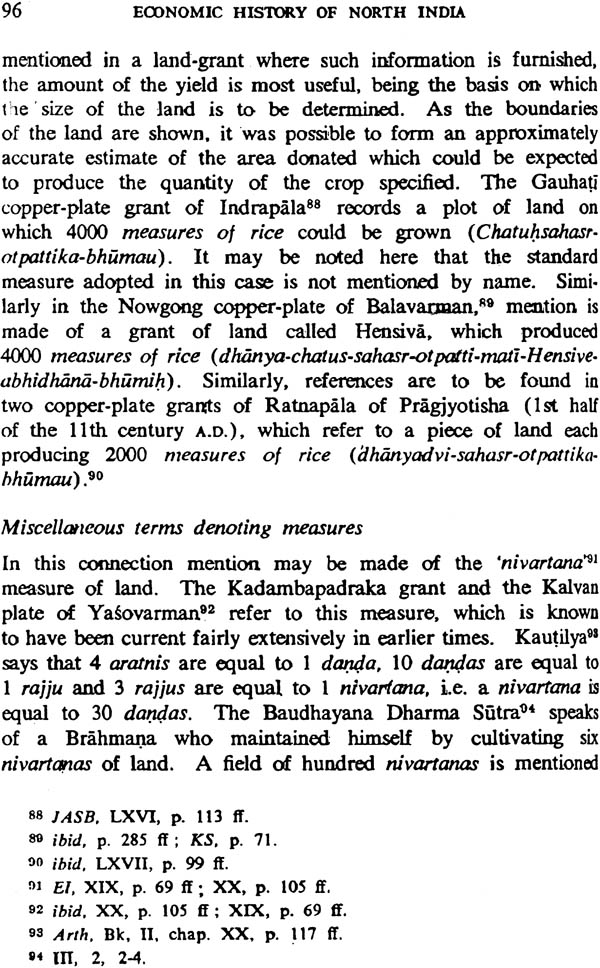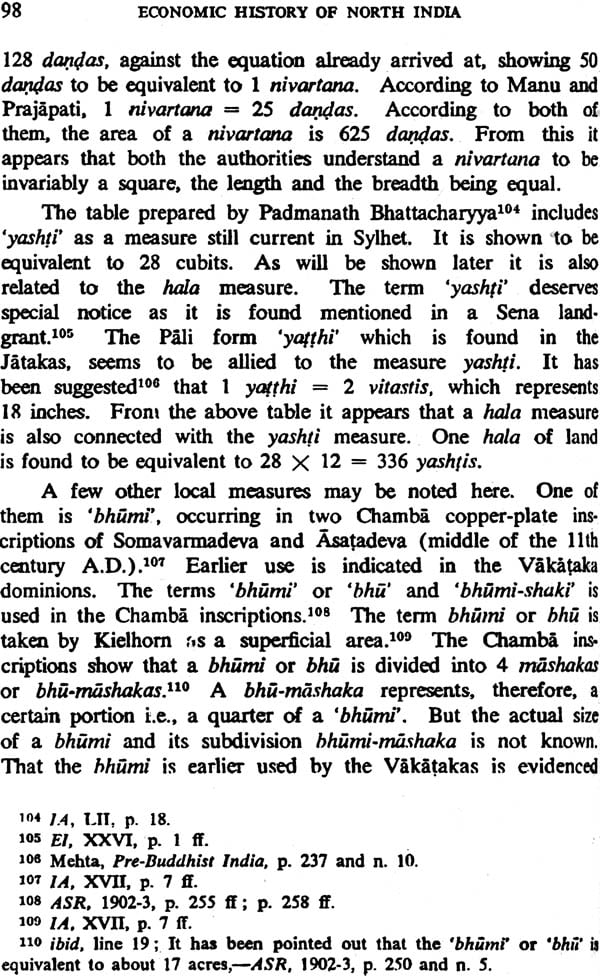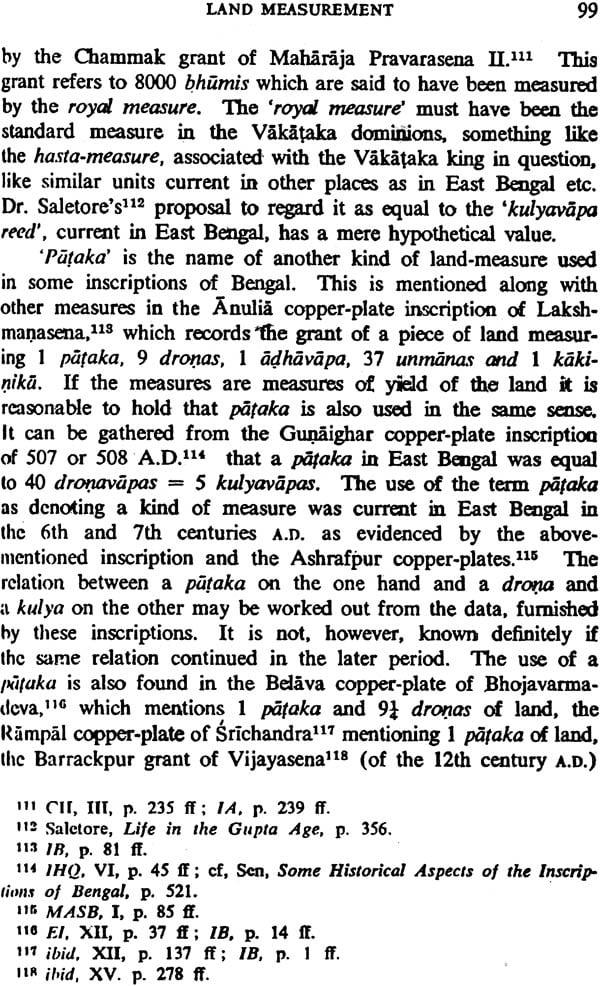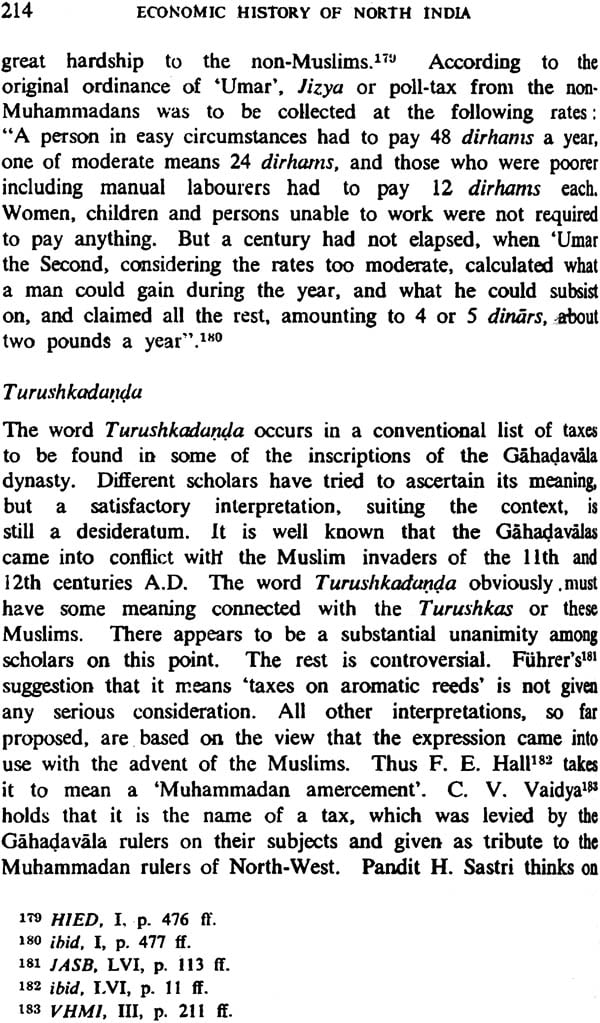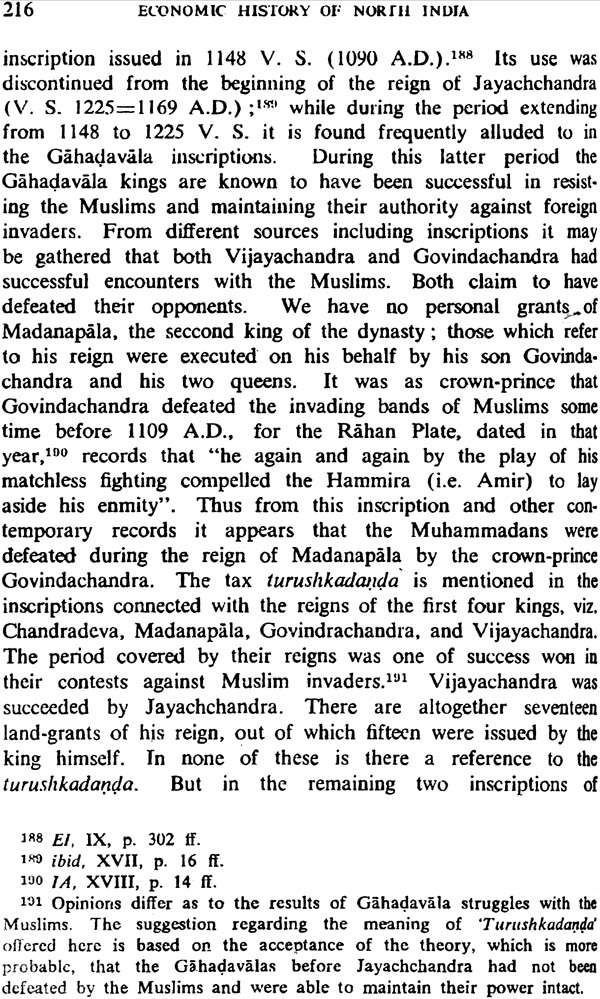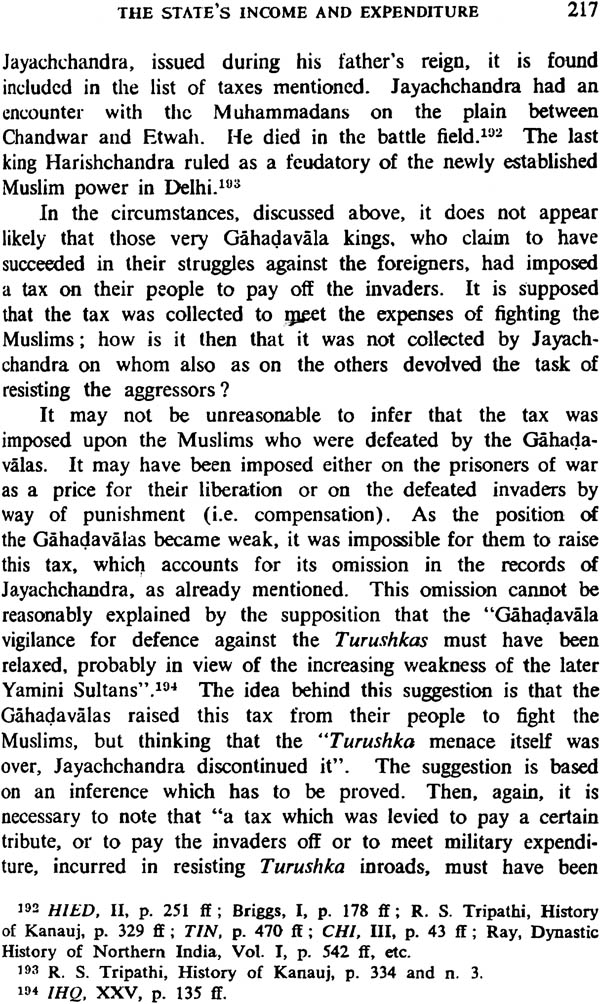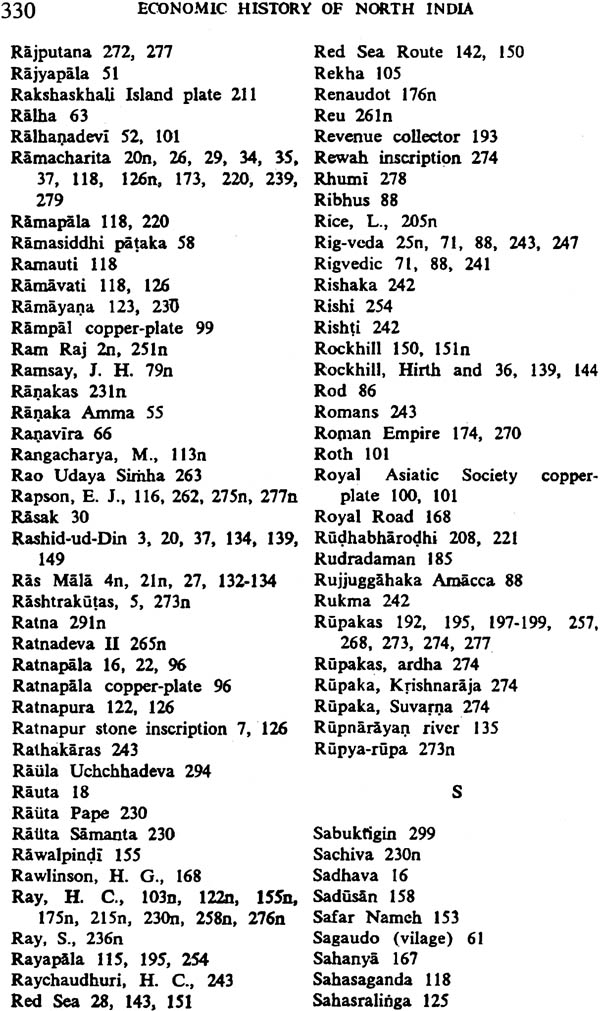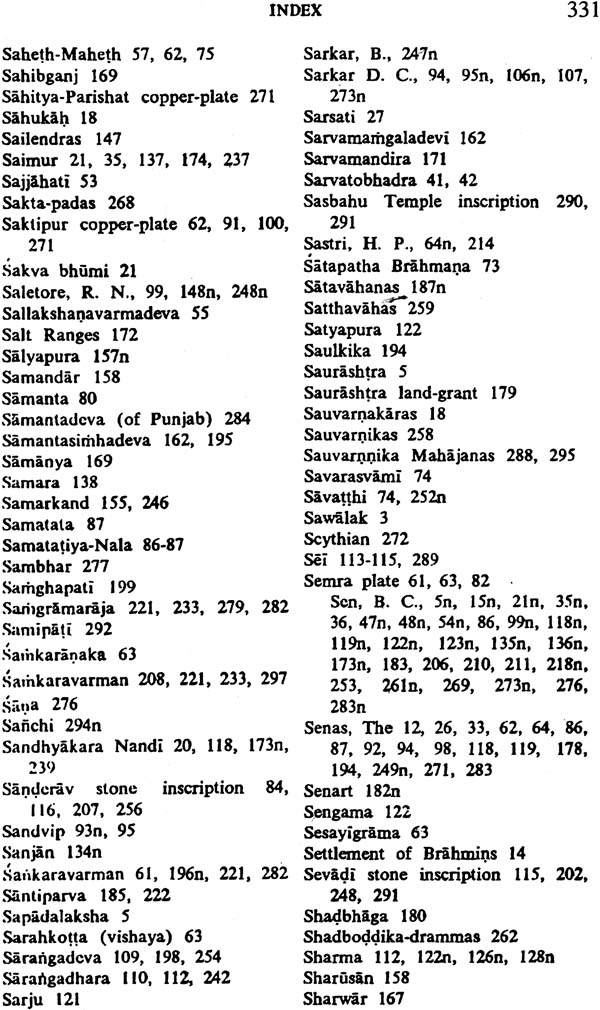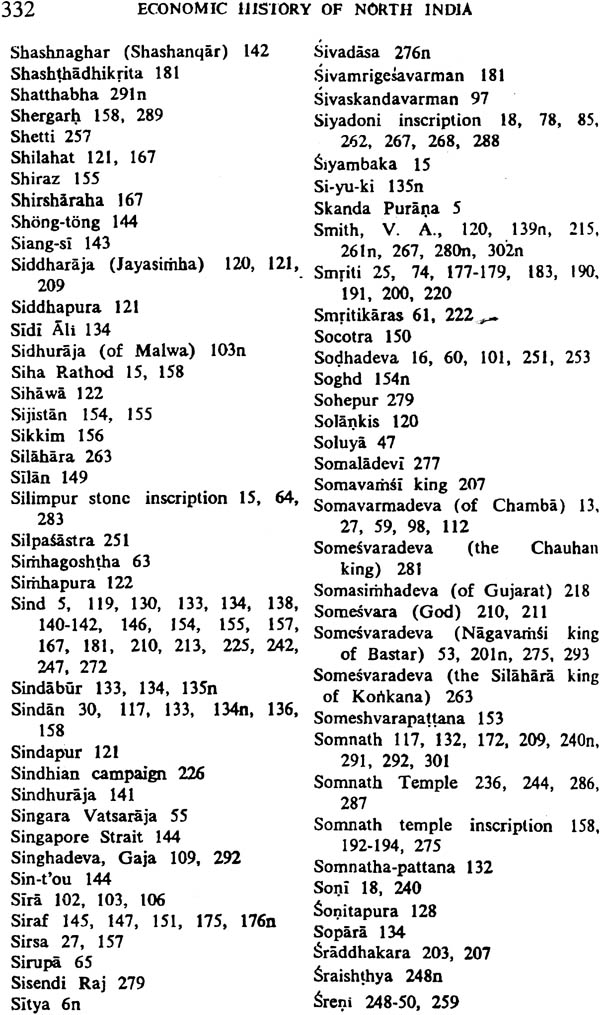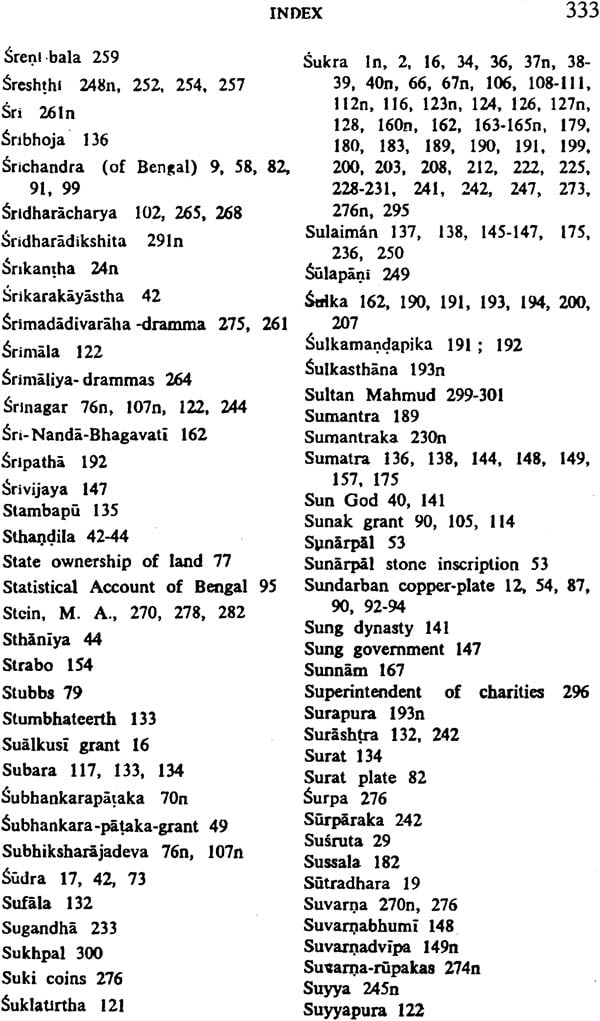
Contributions to The Economic History of Northern India (From the 10th to 12th Century A. D.)
Book Specification
| Item Code: | NAM733 |
| Author: | Puspa Niyogi |
| Publisher: | Maha Bodhi Book Agency |
| Language: | English |
| Edition: | 2012 |
| ISBN: | 9789380336503 |
| Pages: | 370 |
| Cover: | Hardcover |
| Other Details | 8.5 inch x 5.5 inch |
| Weight | 590 gm |
Book Description
Contributions to the Economic History of Northern India from the tenth to the twelfth century A.D. In this work a systematic attempt has been made to explore the economic history of Northern India during the last three centuries of the mediaeval Hindu period on the basis of an intensive study of the data, compiled from literature, indigenous and foreign, inscriptions, coins and other sources. The book consists of eleven chapters, dealing separately with different aspects of economic life and organisation, both rural and urban, as well as the resources of the Hindu governments of Northern India on the eve of their collapse and subjugation by Muslim invaders. It is a scholarly work throwing important light on a subject of great historical interest.
About the Author
Dr. (Ms) Puspa Niyogi had her education at the Calcutta University from where she received Ph.D. and D.Litt. degrees. She retired as Professor of Ancient Indian History and Culture, Calcutta University. Her other published works are Brahmanic Settlements in the Different Subdivisions of Ancient Bengal; Buddhism in Ancient Bengal; Buddhist Divinites; Agrarian and Fiscal Economy of Eastern India from the 4th to the 12th Century A.D., and Expansion of Agriculture in Ancient Bengal, etc.
It is with great pleasure that I welcome the publication of Dr. Puspa Niyogi's work on the economic history of Northern India from the 10th to the 12th century A.D. It can legitimately claim to be the first of its kind to deal with the outstanding features of a period. not treated before in such a compendious form as in the present volume. The book comprises interesting chapters on land. land measurement. trade and commerce. crafts and industries. currency. weights and measures. the State's income and expenditure. planning of towns and villages. temple economy and hoarded wealth. The materials on which they are based have been compiled with meticulous care from the extant sources. original and secondary. specially the epigraphic records which form a voluminous literature. The author shows a truly critical spirit in the selection of her materials. lying scattered in diversified contexts. as well as in her attempt to reconstruct a consistent and reliable theme with due appreciation of the many controversial problems connected with the subject. The book. written in an unpretentious style and embodying a large mass of information compressed with great skill and precision. is one of solid worth in a highly complicated field of research.
Dr. Niyogi surveys the economic condition of an age in which its rulers showed an extraordinary interest in militarism and political expansion. Probably their activities were not exclusively motivated by a desire for political glory. but partly by ideas of economic exploitation as well. In this age also there were renewed foreign inroads, ultimately leading to the beginning of Muslim domination in the North. The economic structure was put to a continuing strain of almost unabated intensity, and was, as a consequence. shaken to its foundations. When the Muslims invaded India they found fabulous concentrations of wealth in some places but the tragic experience of the Indian people showed that accumulated treasures were no sign of an economy which could sustain a determined and prolonged struggle for socio-political integrity. The prevalent economy was a development on traditional lines. based on age-old factors of production and customary distribution of wealth.
India's foreign trade was being profoundly affected by what was happening outside her borders. which was sure. to have its repercussions on the volume and organisation of her internal trade also. Dr. Niyogi seems to suggest in the end of her study that the general pattern of the economic system. which was spread over a vast area, was inherently incapable of averting the unprecedented crises which resulted in the breakdown of the old order. Her able exposition will be of indispensable help to all who are interested in the study of the economy of ancient India.
This thesis prepared under the supervision of Dr. B. C. Sen was approved for the Degree of Doctor of Philosophy of Calcutta University in 1957. I have attempted to present in my work an account of the economic condition of Northern India from the 10th to the 12th century A.D. The subject had a great fascination for me during my Post-graduate days when I was studying in our University the history of the socio-economic institutions of ancient India. After I took my M.A. degree I lost no time in drawing up a plan of research on economic history with special reference to the period indicated above. Fortunately. I was encouraged in pursuing my studies by the grant of a Research Scholarship by the Directorate of Education. Government of West Bengal. which I was privileged to enjoy for three successive terms (1952-55). I published a few papers during this period. and by way of encouragement the University of Calcutta was pleased to grant me a Research Scholarship for a further period in 1955. The award of these scholarships enabled me to keep myself engaged in carrying on a systematic course of research for about five years.
So far as Northern India is concerned. for the period mentioned. published works do not deal with its economic history on a comprehensive scale. In undertaking to investigate the eco- nomic conditions prevailing in the country for about three . centuries preceding its conquest by the Muslims. I was prompted by a desire to contribute. by my humble labours. to the exposition of a subject. not known to have been adequately treated by any previous scholar. The Arabs conquered Sind in the beginning of the 8th century A.D.. and subsequent Muslim invasions finally culminated in the subjugation of the whole of Northern India., which was practically completed by the end of . the 12th century A.D. Failures of the Hindu rulers to meet the Muslim challenge must have been due to various causes. not exclusively political or military, which require a minute investigation. Foreign invasions, and the resultant loss of political power by the Indian rulers, affected the economic institutions of the country, which had also played their part in shaping the situation that ultimately led to the Muhammad an conquest.
I have tried to compile my material from a variety of sources, including inscriptions, coins, works of Muslim writers and indigenous contemporary literature. I do not, however, feel satisfied that the available material is sufficiently clear or exhaustive in every respect. But I proceeded with my enquiry, being convinced that it was worthwhile to compile all that can be gleaned from the sources, accessible to me, and to make a serious attempt to assess its historical value. I have tried to resist the temptation of indulging in guesses or speculations to fill the gaps in my account, due to lack of material. In some places I have discussed earlier as well as later sources, but this has been done only where it was found necessary to attempt to clarify certain points, not intelligibly explained by contemporary sources. After a survey of the material, incorporated in the thesis, I feel convinced that the general economic pattern, existing in the period, was very largely a continuation, with modifications and adjustments, of the system which had taken centuries to grow and evolve. Muslim impact, no doubt, created serious disturbances in that system, which, however, became increasingly manifest after the alien conquest. But, chronologically, an enquiry into the complications that prominently exhibited themselves after the conquest, is outside the scope of the present thesis. There was much wealth in the country when the Muslims first appeared. A great part of this wealth 'was drained off. The wealth of the country had, to a large extent, remained hidden in secret hoards, which were violently seized and appropriated by the invaders. Of the traditional arts and crafts, those which had been flourishing for centuries under the patronage of princes, religious institutions, etc., and which were suited to the tastes, needs and temperaments of the indigenous population, were surely disrupted as a consequence of the Muslim attacks. It was difficult for India's wealth to be regularly employed in trade and commerce whose scope was being considerably restricted on account of insecurity, due to frequent inter-state wars. Lack of initiative and enterprise, and lessening of direct contacts with foreign markets outside India, must have also hindered economic expansion. The fall of famous cities like Kanauj must have disturbed the normal course of affairs, affecting the country's economy as a whole. A large-scale withdrawal of metallic currency in different regions was a sure symptom of economic decline. I have attempted to throw light on some of these and other allied problems that naturally arose in the course of discussing the evidence used.
The present work could not have been carried out without the help of numerous scholars whose valuable contributions have been utilised, wherever necessary. I have indicated my indebtedness to them in the text and in the bibliography. I take the entire responsibility for all mistakes of omission or commission to be found in the book, some of which are due to careless proofreading. I regret the delay in the publication of the book which was sent to the Press in 1958.
I must express my deep gratitude to my revered teacher, Dr. Benoy Chandra Sen without whose constant guidance this work could not have been prepared' and completed.
I take this opportunity to offer my tribute of respect to the memory of Dr. J. C. Ghosh for his affectionate interest in my work during his Vice-Chancellorship of Calcutta University. For their kind sympathy and unfailing encouragement I am indebted to our esteemed National Professor Dr. S. N. Bose, Dr. P, N. Banerjee, a former Vice-Chancellor of our University, Dr. Parimal Roy, Director of Public Instruction, Government of West Bengal (Retired), Dr. A. L. Basham of the School of Oriental and African Studies, London, Dr. B. B. Dutt of Calcutta University. my teachers in the Department of Ancient Indian History & Culture, with which I was associated as a Research Scholar and a Fellow for some years, and also to Principal H. B. Sarkar of Kharagpur College and Principal S. Chakrabortty of the H. M. M. College for Women, Dakshineswar. I should record my grateful appreciation of the very keen and generous interest which Sm. Bela Debi took in the progress of my research work. The staffs of the National Library and the Central Library, Calcutta University. helped me in every possible way. for which I am sincerely thankful to them. In conclusion. I acknowledge my debt of gratitude to Sri Sushil Kumar Basu, Proprietor. Progressive Publishers. Thanks are also due to the Pooran Press for its co-operation in the publication of this book.
| Foreword | (vii) | |
| Preface to the Second Edition | (ix) | |
| Preface to the First Edition | (xi) | |
| Abbreviations | (xvii) | |
| Select Bibliography | (xxiii) | |
| I | Villages : Economic Characteristics and Planning | 1 |
| II | Landed Wealth : Ownership and Distribution | 50 |
| III | Land Measurement | 81 |
| IV | Weights and Measures | 108 |
| V | Towns and Town-Planning | 117 |
| VI | Trade and Commerce | 129 |
| VII | The State's Income and Expenditure | 177 |
| VIII | Crafts and Industries | 235 |
| IX | Currency | 260 |
| X | Temple Economy | 285 |
| XI | Hoarded Wealth | 299 |
| Errata | 304 | |
| Index | 307 | |
| Opinions | 339 |
